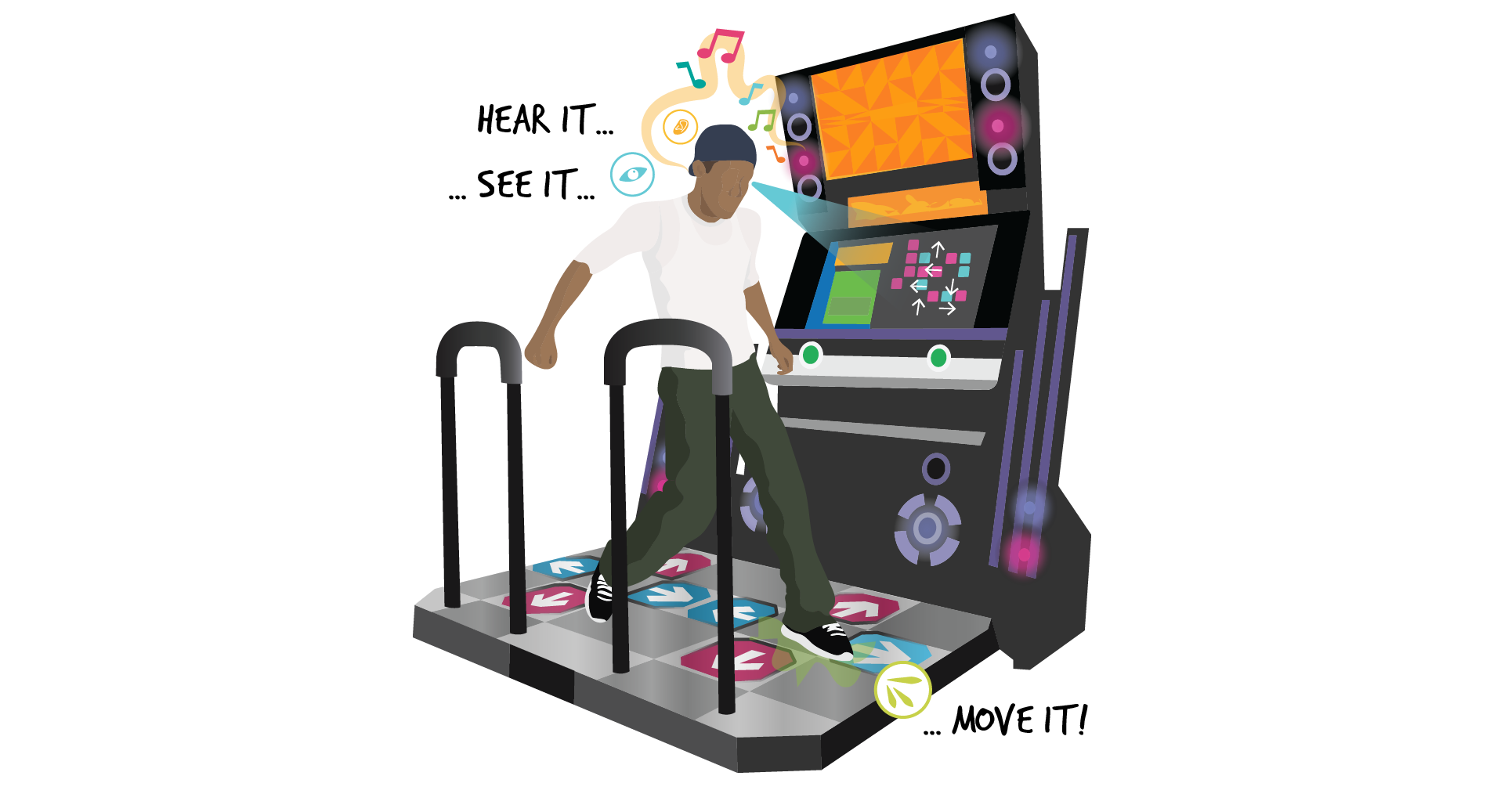
7.3 Multisensory Design Experiences
Interactive products that incorporate smart technologies depend on the integrated expertise of a range of design disciplines. The synergy of the design team provides important skills for developing enhanced sensory product interactions that make familiar products more complex. For example, interdisciplinary design teams develop watches that no longer only have the primary function of telling time; they can measure your heart rate (tactile), send messages to your friends (visual), alert you about key events (auditory), and even wind themselves with animated and rhythmic (kinetic) hand gestures (Park & Alderman, 2018). Watches may soon emit smells to trigger important memories or rituals. These days, do you have a watch or another device for telling time? Take a few minutes to reflect on your device’s additional features, especially its multimodal and accessible features.
enhanced multisensory and multi-layered product interactions
While video games provide even more complex multisensory experiences, the essence of multisensory layering in design is the same – to integrate patterns of sensory modalities or layers that stimulate multiple senses in a specific order over time or in synchronous clusters. In the example below, we see a participant player perceiving and interpreting the game’s electromagnetic (light and sound) and mechanical (motion mapping and handrails) stimuli. In response, our player takes action by stepping on or across squares in reaction to the beat and to their own physical capabilities. This leads to an engaging pattern of further sensory stimulation and responses. A key concept that helps us understand how to design the order of sensory interactions is called sensory dominance, which we explain in the following section.

Player engaging with complex, active, and fun multisensory stimuli

